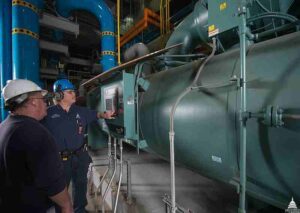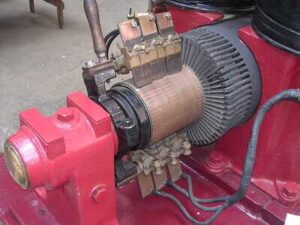5 Sustainable Manufacturing Practices Explained
Sustainable manufacturing practices are; sustainable raw material selection, energy efficiency improvement, product recycling, renewable energy utilization, and effluent treatment.
This article discusses sustainable manufacturing processes, as follows;
1). Sustainable Raw Material Selection (as one of the Sustainable Manufacturing Practices)
Sustainable material selection is simply the act and process of assessing the sustainability of materials based on a number of criteria, to ensure that these materials are suitable for an intended purpose.
Typically, products resulting from sustainable manufacturing processes must be simplistic in design and non-toxic in composition. These are objectives that should be considered when selecting raw materials for use as ingredients in sustainable manufacturing.
Factors that need to be considered when choosing sustainable materials for include; suitability, recyclability, energy efficiency, chemical composition, and behavioral tendency under various conditions.
Generally, materials that are selected to be used in sustainable manufacturing must have minimal environmental impact while still being capable of performing effectively.
2). Energy Efficiency Improvement
One of the objectives of sustainable manufacturing is to reduce the amount of energy resources that are consumed by products over their entire lifecycle.
Achieving this is possible by improving energy efficiency of both products and the process(s) by which they are manufactured.
Energy efficiency is a key driver of sustainability [1], and highlights the link between various concepts of sustainable development like circular economy, innovation, green economy, and process optimization.
As indicated above, energy efficiency improvement begins within the sustainable manufacturing environment, with modifications to manufacturing techniques and equipment; and extends into the utilization of products.
It encompasses multiple aspects of manufacturing that include raw materials, processing approach, product design, mode of product use, and end-of-life practices like recycling.
For all these aspects and phases, the amount of energy wastage must be reduced to the barest minimum, to make the manufacturing process sustainable.

3). Product Recycling (as one of the Sustainable Manufacturing Practices)
Recycling is one of the most typical and essential practices of sustainable manufacturing.
This is because recycling helps to optimize energy and resource efficiency, both of which improve the resilience of supply chains and the economy as a whole.
The effectiveness of recycling can be increased through optimal material selection and product design practices.

4). Renewable Energy Utilization
Sustainable manufacturing favors energy transition, and the adoption of renewable alternatives to fossil fuels.
Renewable energy relates to sustainability through the minimization of environmental impacts in the form of greenhouse emissions, pollution and deforestation, among others.
When incorporated into manufacturing, renewable energy technologies like solar panels and wind turbines make it possible to obtain, convert and utilize energy without causing significant environmental degradation or economic loss [2]. This in turn increases the sustainability of manufacturing.
5). Effluent Treatment (as one of the Sustainable Manufacturing Practices)
Effluents are useless byproducts of industrial processes like manufacturing and electricity generation.
In order for manufacturing to be sustainable; such byproducts must be properly treated to decrease their toxicity before they are released into the environment.
Effluent treatment is essential to sustain the productivity of ecosystems, and may occur in primary, secondary and tertiary stages.
It can be viewed as a form of recycling, since it aims to restore the quality of waste materials.
Conclusion
Sustainable manufacturing practices are;
1. Sustainable Raw Material Selection
2. Energy Efficiency Improvement
3. Product Recycling
4. Renewable Energy Utilization
5. Effluent Treatment
References
1). Gangopadhyay, P.; Das, N. (2022). “Can Energy Efficiency Promote Human Development in a Developing Economy?” Sustainability, MDPI, vol. 14(21), pages 1-20. Available at: https://ideas.repec.org/a/gam/jsusta/v14y2022i21p14634-d965908.html. (Accessed 29 December 2022).
2). IRENA; FAO (2021). “Renewable energy for agri-food systems: Towards the Sustainable Development Goals and the Paris Agreement.” Available at: https://www.fao.org/documents/card/en/c/cb7433en/. (Accessed 29 December 2022).
